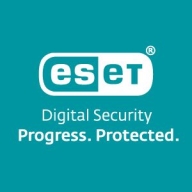

ESET Inspect and Microsoft Defender for Endpoint offer robust endpoint security solutions. Microsoft Defender is positioned as a superior product in terms of security functionalities despite ESET Inspect's edge in user satisfaction with pricing and support.
Features: ESET Inspect is favored for its advanced threat detection, minimal system impact, and easy management. Microsoft Defender for Endpoint excels with its integration across the Microsoft ecosystem, automated remediation capabilities, and comprehensive security features.
Room for Improvement: Users suggest ESET Inspect could improve in user configurability, reporting features, and dashboard usability. Microsoft Defender for Endpoint users point out the need for better cross-platform support, reduced false positives, and improved user interface.
Ease of Deployment and Customer Service: ESET Inspect is appreciated for its straightforward deployment process and responsive customer service. Microsoft Defender for Endpoint has a complex implementation but benefits from integration within the Microsoft ecosystem. Customer support experiences are mixed for Microsoft Defender. ESET Inspect generally wins in deployment ease.
Pricing and ROI: ESET Inspect's pricing is viewed favorably and cost-effective. Microsoft Defender for Endpoint's price points are higher, but users feel the additional features justify the investment. Microsoft Defender shows better ROI due to its extensive features and integration.


ESET Inspect is an essential component to help ensure the highest level of enterprise security. While standard ESET Endpoint Security provides strong protection, ESET Inspect takes your environment's security to a new dimension. A security tool is needed to help security professionals protect their sensitive data and detect and investigate security incidents, advanced threats, and targeted attacks or breaches on endpoint devices. ESET Inspect is a tool that offers the peace of mind of continuous protection and security monitoring in a powerful and easy-to-use solution.
Microsoft Defender for Endpoint is a comprehensive security solution that provides advanced threat protection for organizations. It offers real-time protection against various types of cyber threats, including malware, viruses, ransomware, and phishing attacks.
With its powerful machine-learning capabilities, it can detect and block sophisticated attacks before they can cause any harm. The solution also includes endpoint detection and response (EDR) capabilities, allowing organizations to quickly investigate and respond to security incidents. It provides detailed insights into the attack timeline, enabling security teams to understand the scope and impact of an incident.
Microsoft Defender for Endpoint also offers proactive threat hunting, allowing organizations to proactively search for and identify potential threats within their network. It integrates seamlessly with other Microsoft security solutions, such as Microsoft Defender XDR, to provide a unified and holistic security approach. With its centralized management console, organizations can easily deploy, configure, and monitor the security solution across their entire network.
Microsoft Defender for Endpoint is a robust and scalable security solution that helps organizations protect their endpoints and data from evolving cyber threats.
We monitor all Endpoint Detection and Response (EDR) reviews to prevent fraudulent reviews and keep review quality high. We do not post reviews by company employees or direct competitors. We validate each review for authenticity via cross-reference with LinkedIn, and personal follow-up with the reviewer when necessary.